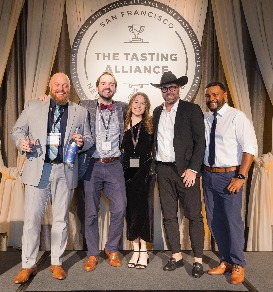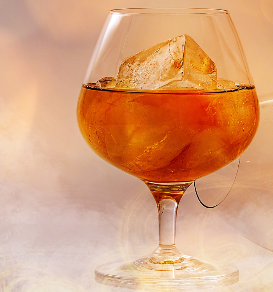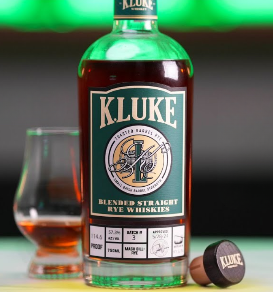Tasting spirits is a captivating odyssey, where each sip unveils a story, a tradition, and a craft honed over centuries. This is not merely about drinking; it is about tasting, savoring, and understanding the essence of spirits that have traversed time and geography to reach your glass. The art of spirit tasting is a ritual, a bridge connecting the past with the present, inviting us to explore the depths of flavors, aromas, and the very soul of these distilled marvels.
Spirit tasting is a revered tradition, echoing the rich tapestry of human history. From the ancient distilleries of the Middle East to the sophisticated bars of modern metropolises, the journey of spirits has been intertwined with our own.
It reflects our innovations, our cultural exchanges, and our relentless pursuit of perfection. Through tasting, we pay homage to the artisans and visionaries who have distilled not just alcohol but the essence of their experiences, their lands, and their heritage into each bottle.
This guide is your compass to navigate this vast and intricate world. It promises to transform the act of tasting into an enlightening experience, one that will enhance your appreciation for the nuanced craft behind each spirit.
Whether you are a connoisseur or a curious explorer, the journey ahead promises to enrich your understanding and pleasure of spirits, one refined sip at a time. Welcome to the transcendent art of spirit tasting, a journey that goes beyond the palate to touch your soul.

The Setup: Preparing for a Tasting
Embarking on a spirit tasting journey transcends mere sipping; it’s an art form, a ritual that demands respect for the liquid alchemy held within each bottle. The first step in this sensory expedition is to create a sanctuary, a space where the spirit’s voice can resonate clearly, unencumbered by the cacophony of everyday life. This preparation is not just about the physical environment but also about cultivating a mindset ready to engage deeply with the spirit’s story.
Creating the Right Environment
This is paramount. Imagine a setting where the ambiance serves as a blank canvas, allowing the spirit’s nuances to paint their masterpiece. This means selecting a space free from overpowering aromas and distractions. A neutral environment ensures that the first impression is untainted, allowing you to detect even the most subtle notes in the spirit’s profile. Lighting, too, plays a role; soft, natural light can enhance your visual examination of the spirit, revealing its true color and viscosity. The goal is to foster a setting that enhances focus and mindfulness, turning the tasting into a meditative experience.
Selecting Your Spirits
This is the next critical step. Diversity is the spice of life and the cornerstone of a well-rounded tasting experience. Start with a palette of classics, those spirits that have defined and refined the art of distillation over centuries. These benchmark selections offer a foundation, a reference point from which to explore. Then, venture into the world of contemporary craft distillations.
These spirits often tell a story of innovation, of distillers pushing the boundaries of tradition to create something truly unique. When choosing spirits, consider a range that spans different regions, ingredients, and methods of distillation. This diversity not only broadens your palate but also deepens your appreciation for the craftsmanship and cultural heritage embedded in each bottle.
As you select spirits for your tasting, remember that each bottle is a chapter in the broader narrative of distillation. From the smoky peat of a classic Islay Scotch to the vibrant botanicals of a small-batch gin, each spirit offers a window into its soul. Your role as a taster is to listen, to discern the subtleties and complexities that make each spirit a testament to its origins and craftsmanship.
In this preparatory phase, you’re not just setting up a physical space or selecting a range of spirits. You’re laying the groundwork for a journey of discovery, one that promises to expand your sensory horizons and deepen your connection to the rich tapestry of tastes and traditions that define the world of spirits. Welcome to the threshold of taste exploration, where each sip is a step further into the vast, uncharted territories of flavor and aroma.

Understanding the Spirit: Beyond the Bottle
Embarking on the journey of spirit tasting is akin to unlocking a treasure trove of sensory experiences, where each spirit presents a unique story waiting to be discovered. To fully appreciate the essence of a spirit, one must engage in a ritual that goes beyond mere consumption, delving into a realm where every detail matters, from the visual allure to the intricate dance of aromas.
The Art of Observation
Before the spirit graces your palate, let your eyes be the first to savor its elegance. The act of observation is not merely a preliminary glance but a thoughtful examination of the spirit’s visual identity. The color of a spirit is a whisper from the past, hinting at the age, the type of cask used for aging, and even the ingredients that played a role in its creation. A deeper hue might suggest a lengthy repose in oak barrels, bestowing upon the liquid a richer, more complex character.
Equally telling is the viscosity of the spirit, observed through the legs or tears that cling to the side of the glass when swirled. This ballet of droplets reveals the spirit’s body, offering clues about its texture and alcohol content. A fuller body might promise a more pronounced presence on the palate, while the clarity speaks of the spirit’s purity and the meticulous care taken during distillation.
Aroma Exploration
The bouquet of a spirit is a tapestry of scents, each thread interwoven with memories and sensations. To explore this aromatic landscape, one must approach with finesse, adopting a posture and method that respects the spirit’s volatile nature. Rather than plunging nose-first into the glass, invite the aromas to come to you. Hovering just above the rim allows the subtler notes to emerge, free from the overpowering embrace of alcohol vapors.
This gentle inhalation paves the way for a nuanced exploration of the spirit’s aroma. From the initial bright, zesty top notes to the deep, resonant base notes, each inhalation reveals layers of complexity. Citrus, floral, spice, or even the elusive hint of smoke can tell tales of the spirit’s origin, the craftsmanship of the distiller, and the terroir that nurtured its ingredients.
Mastering the art of aroma exploration requires patience and practice. Each spirit demands your undivided attention, inviting you to decipher its secrets and understand its essence. This sensory pilgrimage is not a race to the finish but a leisurely stroll through the garden of flavors each spirit embodies.
In the realm of spirit tasting, the visual and olfactory experiences set the stage for the ultimate encounter: the taste. As you prepare to take that first sip, remember that what lies within the glass is more than just a beverage—it is a narrative of tradition, innovation, and the relentless pursuit of excellence. Let the spirit guide you through its history, one sip at a time, as you continue to refine your palate and deepen your appreciation for the artistry of distillation.
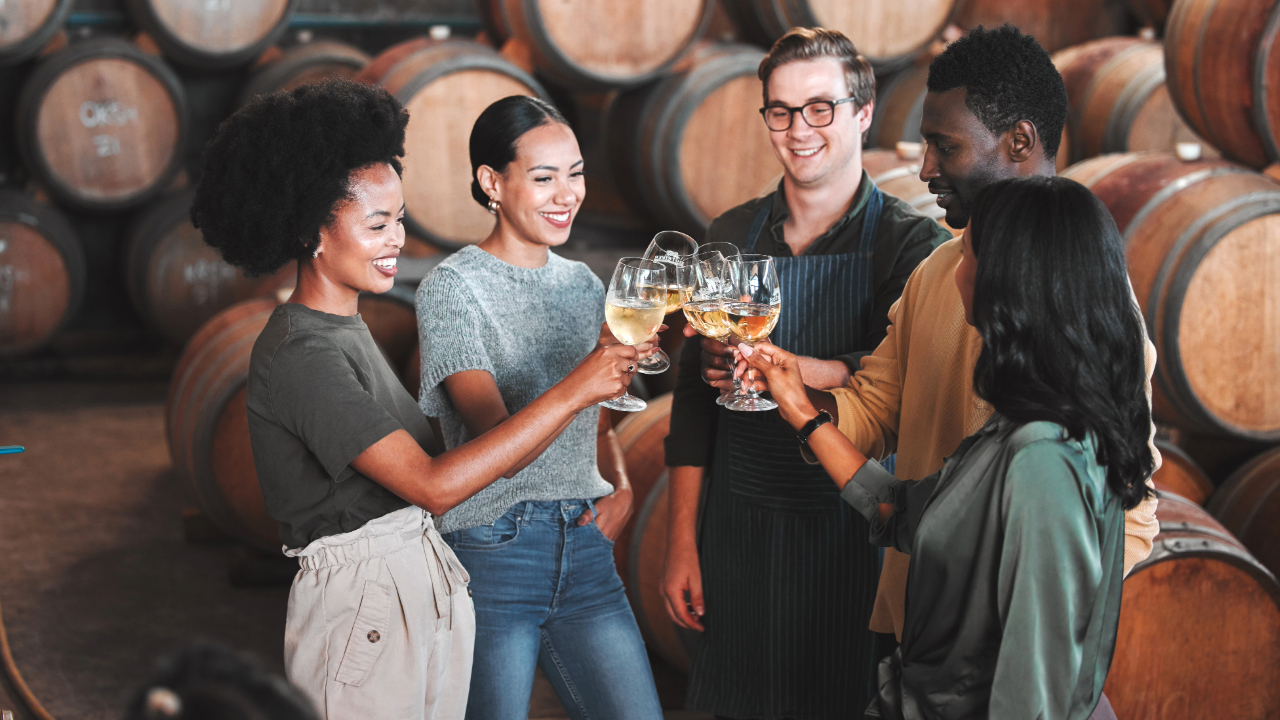
The First Sip: Engaging Your Palate
Embarking on the sensory voyage of spirit tasting is akin to unlocking a treasure trove of flavors, each sip a revelation, each moment a step closer to understanding the intricate dance of distillation and aging. This section is your guide to navigating these waters with the finesse of a seasoned sailor, transforming each tasting into an expedition of discovery.
The Approach
Imagine standing at the edge of an aromatic abyss, your spirit of choice cradled in a glass, beckoning. The first sip is not merely a gesture; it is an initiation into the spirit’s essence. Begin with small, deliberate sips, allowing the liquid to gracefully introduce itself to your palate. This is not a race to the finish but a slow, measured journey of appreciation. As you sip, breathe in gently through your nose, letting the spirit’s vapors mingle with your senses, enhancing your ability to detect its complex bouquet. This methodical approach not only prevents the shock of alcohol burn but opens up a spectrum of flavors previously veiled.
Flavor Profiles
With each sip comes a cascade of flavors, a symphony where each note has its part to play. Primary flavors strike first, bold and unmistakable, laying the foundation. These are the flavors that speak of the spirit’s main ingredients and distillation character—sweet, sour, salty, bitter, and umami. But the true art of tasting lies in teasing out the secondary notes, the subtle whispers of flavor that linger in the background, often revealing the spirit’s aging process, the type of cask used, and even the influence of the environment where it was crafted.
To identify these nuances, draw upon your personal library of tastes and memories. A hint of vanilla might transport you to a kitchen warmed by baking, while a whisper of smoke may recall nights spent by a crackling fire. This exercise in sensory memory not only enriches the tasting experience but deepens your connection to the spirit, transforming each sip into a narrative woven from the spirit’s journey and your own.
In this realm, the art of detecting subtle undertones becomes a dialogue between the spirit and the senses, a conversation that unveils the depth and complexity of the distiller’s craft. It’s here, in the interplay of flavors, that the spirit truly comes to life, revealing its story sip by sip, inviting you to explore further, delve deeper, and appreciate the nuanced landscape of spirits in all their diversity.
As you embark on this journey, remember that tasting is not just about the flavors encountered but the memories created and the connections forged. Each spirit offers a unique experience, a chance to explore the world through your palate, and to discover the rich tapestry of tastes that awaits within each bottle.

The Journey Through the Glass
In the realm of spirit tasting, the journey through the glass is a nuanced exploration that extends far beyond the initial flavors that greet the palate. This voyage reveals the intricate characteristics of texture and body, culminating in the defining moment of the finish. Each sip is a narrative, unfolding layers of craftsmanship and tradition.
Texture and Body
To truly appreciate a spirit, one must delve into its texture and body, attributes that speak volumes about its quality and the meticulousness of its production process. The texture—whether silky, creamy, oily, or sharp—plays a pivotal role in how the spirit is perceived. It’s the tactile experience that accompanies each sip, a sensation that coats the palate and invites deeper contemplation.
Assessing the body involves gauging the weight and fullness of the spirit in your mouth. Is it light and ethereal, or is it rich and full-bodied? These elements are indicative of the spirit’s distillation and aging process, providing clues to the environment in which it was nurtured and the care imbued by its creators.
The Finish
The finish, or the aftertaste that lingers once the spirit has been swallowed, is the final act in the tasting experience. It’s here that the spirit makes its lasting impression, weaving together the complexity of its flavors and the craftsmanship behind its creation. A long, lingering finish can unveil layers of subtlety, from the smokiness of a peated Scotch to the sweet, caramel embrace of a well-aged bourbon. Conversely, a short finish might offer a clean, crisp conclusion, leaving a refreshingly light impression. The duration and complexity of the finish are reflective of the spirit’s harmony and balance, an echo of its journey from still to glass
The texture and body, followed by the finish, serve as the spirit’s signature, a testament to its heritage and the vision of its distillers. As you navigate through the glass, these elements become markers of discovery, guiding you through the intricate landscape of spirits. They invite a deeper engagement with the drink, encouraging a mindful appreciation of the craft involved in its creation.
In this journey, every spirit presents a unique story, a blend of tradition, innovation, and the natural environment from which it draws its essence. The exploration of texture, body, and finish is not just an assessment of quality but an homage to the spirit’s origins and the meticulous care woven into each drop. As you savor the journey through the glass, let the spirit unfold its narrative, enriching your tasting experience with every nuanced sip.

Advanced Tasting Techniques
In the intricate dance of spirit tasting, advanced techniques beckon the enthusiast further into the depths of flavor and complexity. These methods, honed over time, offer a key to unlocking the full spectrum of a spirit’s character, revealing nuances that might otherwise remain hidden. Let’s delve into the artistry behind water and dilution, followed by the enlightening practice of comparative tasting.
Water and Dilution
The addition of water to spirits, particularly those of higher proof, is akin to a revelation. This seemingly simple act can dramatically unveil hidden flavors, soften the alcohol’s bite, and open up the bouquet, allowing the taster to perceive subtle notes that were previously obscured. The key lies in finding the perfect balance—just enough water to enhance the spirit’s characteristics without diluting its essence.
For enthusiasts seeking to explore this technique, begin with a few drops in your glass, swirling gently to integrate. Notice the changes in aroma and flavor as the spirit opens up, becoming more accessible. This method is particularly effective with whiskies and rums, where the complexity can be vast, and the higher alcohol content may mask delicate nuances. The goal is not to weaken the spirit but to invite its true nature to emerge, offering a richer, more rounded tasting experience.
Comparative Tasting
Comparative tasting is the practice of experiencing spirits side by side, a technique that illuminates differences and similarities in a way that tasting a single spirit cannot. By comparing spirits of different ages, from various regions, or produced using distinct distillation methods, one can develop a deeper understanding of the influence these factors have on the final product.
Engage with this technique by selecting a theme for your tasting session—be it comparing the same spirit from different regions or exploring the evolution of a single spirit across different ages. As you taste, pay attention to the variations in flavor, aroma, texture, and finish. Note how the character of a spirit can be shaped by its terroir, the distiller’s craft, and the subtleties of aging. This method not only enhances your palate but also enriches your appreciation for the diversity and complexity of spirits.
Advanced tasting techniques like water and dilution, along with comparative tasting, are gateways to a deeper sensory engagement with spirits. They encourage a thoughtful exploration beyond the surface, fostering an intimate connection with the art and science of distillation. As you venture into these practices, remember that the journey of tasting is one of discovery, where each sip offers lessons in flavor, tradition, and the boundless possibilities contained within each glass.
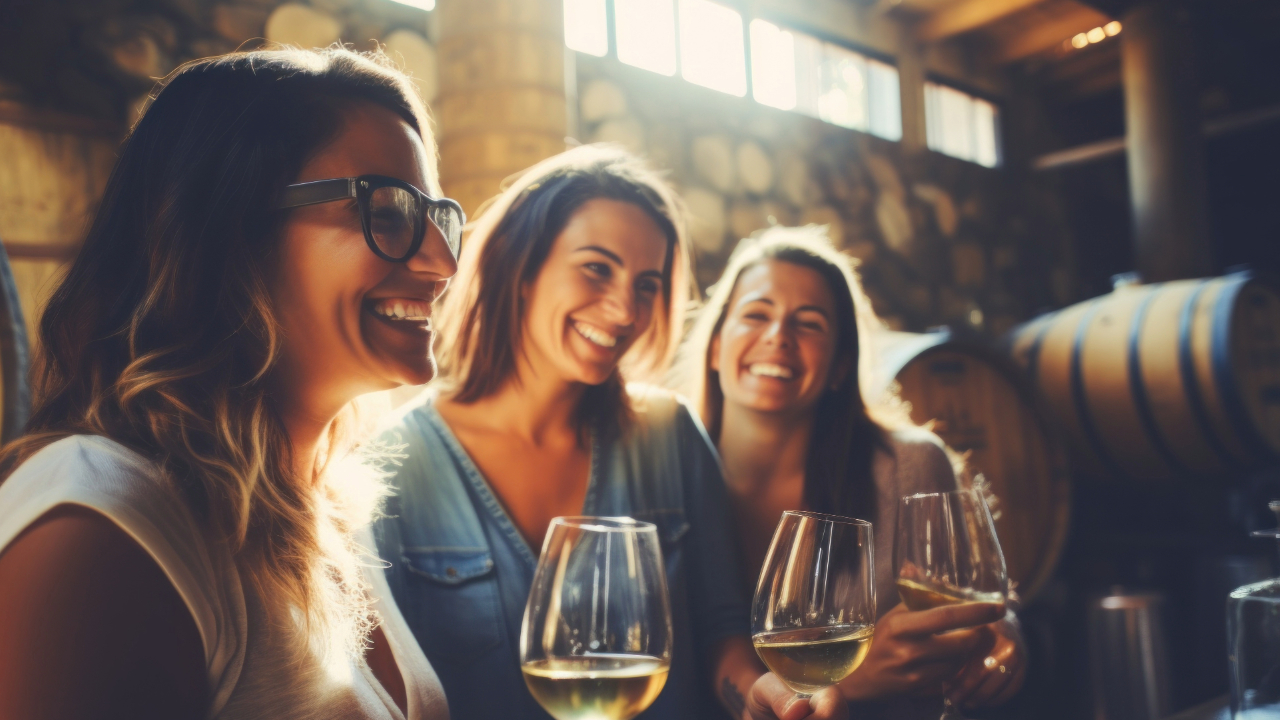
Tasting Like a Pro: Tips and Etiquette
Embarking on the journey of spirit tasting with the finesse of a seasoned connoisseur involves more than just an appreciation for fine spirits; it requires mindfulness of the subtle details that can elevate or diminish the experience. In this section, we explore the sage advice and customs that pave the way for a truly enlightened tasting adventure, ensuring every sip is savored with discernment and sophistication.
Avoiding Common Pitfalls
The canvas for your tasting experience begins long before the first drop touches your lips. Certain foods and fragrances have the power to linger, clouding your ability to fully appreciate the delicate balance and complexity of a spirit. To sidestep these common pitfalls, it’s advisable to avoid overly spicy, pungent, or aromatic foods prior to your tasting. These flavors can mask the subtle notes you’re seeking to uncover, skewing your perception and the spirit’s true profile.
Similarly, perfumes, colognes, and even scented lotions or soaps can intrude upon your olfactory senses, competing with the spirit’s bouquet. Opt for neutrality in both your environment and on your person to ensure that the spirit remains the protagonist of your sensory exploration.
Palate Cleansing
Just as an artist cleans their brush between strokes, cleansing the palate between tastings is crucial for maintaining the integrity of each spirit’s flavor profile. Water, ideally still, serves as the perfect neutralizer, washing away residual tastes without introducing new flavors. Sipping water between spirits clears the way for a fresh sensory experience, allowing each spirit to present itself without the shadow of its predecessor.
For a more comprehensive reset, consider mild palate cleansers like unsalted crackers or bread. These simple, unobtrusive foods can absorb lingering flavors, providing a clean slate for your next tasting. The goal is to approach each spirit with a clear, unprejudiced palate, ready to capture the full spectrum of flavors and aromas it has to offer.
Adhering to these tips and etiquette not only enhances your tasting experience but also deepens your understanding and appreciation of the spirit’s journey from barrel to glass. By avoiding common pitfalls and embracing the practice of palate cleansing, you’re not just tasting like a pro—you’re honoring the craft behind each bottle, engaging with the spirit in a dialogue that transcends the ordinary, elevating your sensory journey to an art form.

Reflection and Notes
In the contemplative moments following the clink of glasses and the final sips of a meticulously chosen spirit, the journey of tasting transcends the boundaries of flavor and aroma, entering a realm of introspection and communal exchange.
Keeping a Tasting Journal
The act of chronicling your tasting experiences in a journal is both a discipline and a revelation, offering a tangible narrative of your journey through the world of spirits. This practice is not just about recording what you taste; it’s about capturing the moment, the setting, and the emotions that accompany each tasting. Over time, these entries become a roadmap of your evolving palate, revealing patterns, preferences, and even surprises that shape your unique tasting profile.
A tasting journal serves as a personal archive, a collection of moments savored and lessons learned. It encourages a mindful approach to tasting, prompting you to articulate the nuances that distinguish one spirit from another. This reflection not only deepens your sensory engagement with the spirit but also enhances your memory and appreciation of the experience.
Sharing the Experience
Spirit tasting, at its core, is a communal ritual, an invitation to connect with others over shared sensations and discoveries. Engaging in dialogue with fellow enthusiasts opens a window to diverse perspectives, enriching your understanding of spirits through the lens of collective experience. These exchanges, whether in person or through social media platforms and forums, cultivate a sense of community, uniting individuals in their quest for sensory exploration and appreciation.
Sharing your tasting experiences and insights not only contributes to the tapestry of the tasting community but also invites feedback, recommendations, and friendly debates. It’s in these interactions that the subjective nature of tasting truly shines, highlighting the personal journey each individual undertakes in their pursuit of flavor, aroma, and the stories that spirits tell.
As you traverse the intricate landscape of spirit tasting, remember that reflection and note-taking are not just ancillary activities; they are integral to the journey. They serve as a bridge between individual experience and communal wisdom, enriching your path with layers of understanding, connection, and shared joy. Through the practice of keeping a tasting journal and sharing your experiences, you not only chronicle your own growth as a connoisseur but also contribute to the vibrant tapestry of the spirit tasting community, a mosaic of tastes, tales, and traditions that span the globe.

